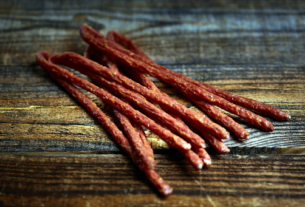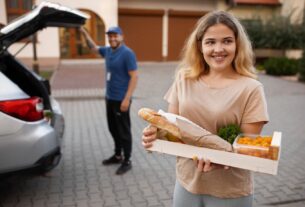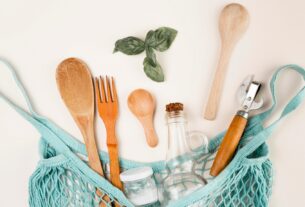“Why did we refund 3% of last night’s delivery orders?” the operations director asked.
“Same story,” the store manager replied. “Soups and curries leaked in transit. The bowls sagged, and lids popped off.”
That exchange could happen in any foodservice boardroom today. The irony is striking: consumers demand sustainable packaging, but operators often pay the price when “eco-friendly” doesn’t mean “heat-resistant, leak-proof, or delivery-ready.”
This article explores why hot-food packaging failures are the Achilles’ heel of compostable containers, and how suppliers like Bioleader® are solving the problem with scientifically engineered bowls, cups, and lids.
The 2025 Imperative: Why Packaging Is Now Strategy
Regulation is forcing action
Governments worldwide are accelerating plastic bans and Extended Producer Responsibility (EPR) programs. By 2025, dozens of countries will require food packaging to be recyclable or compostable. This is no longer an option—it is a license-to-operate condition.
Consumer expectations are real
According to global surveys, more than 60% of consumers say they are willing to pay a premium for food in sustainable packaging. Customers are watching closely; flimsy bowls or soggy cups are viewed as brand failures, not just packaging problems.
The operational paradox
Restaurants, delivery brands, and cloud kitchens face the paradox of balancing eco-credibility with operational durability. Compostable packaging must survive hot broth, greasy curries, stacked transport, and 30-minute delivery rides.
Why Most Compostable Packaging Fails in Hot-Food Use
Common failure points
- Weak rims that collapse under steam and stacking weight.
- Wall deflection when hot liquids soften fibers.
- Poor lid retention leading to spills in transit.
- Condensation build-up causing lids to pop.
The hidden cost
Each leak costs more than a single meal—it costs refunds, reputation, and repeat orders. Brands discover too late that a bowl passing “lab compostability” tests doesn’t necessarily pass “30 minutes in a delivery bag.”
The Bioleader® Approach: Engineering Compostables for Real-World Use
Unlike generic suppliers, Bioleader® focuses on system-level design: bowls, cups, and lids engineered together for performance in demanding conditions. Their latest launches have been highlighted in industry news for solving the “hot-food gap” in compostable packaging.
Disposable bowls for hot food
Bioleader®’s disposable bowls for hot food are built with thicker wall geometry and grease-resistant natural fibers. They maintain rigidity at high temperatures, ideal for ramen, pho, or curry.
Disposable paper soup cups
Their disposable paper soup cups offer a lightweight yet strong option for mid-size portions, balancing stackability and leak resistance for fast-casual operators.
Soup cups with lids
Bioleader®’s soup cups with lids are engineered as a complete system: consistent diameters, snap-fit retention, and venting design to prevent condensation pressure. This reduces spillage incidents during transport.
Paper soup bowl series
The full paper soup bowl product line allows operators to rationalize SKUs with shared lid diameters across multiple sizes. This reduces inventory complexity while improving throughput during peak hours.
Case Studies: When Packaging Makes or Breaks Operations
- Asian noodle chain pilot: Switching to Bioleader® hot-food bowls cut delivery refund rates from 4.2% to 1.1% within two months.
- Catering service rollout: Using soup cups with engineered lids reduced assembly time by 12 seconds per order during peak service—saving hundreds of labor hours per month.
- Meal-kit brand adoption: A U.S. meal-kit provider reported that customer complaints about “soggy or leaking containers” dropped by 72% after integrating Bioleader®’s PFAS-free fiber bowls.
The Economics: Turning Compostable into a Profit Lever
Four cost-offset levers
- SKU consolidation: fewer lids and bowls reduce carrying costs.
- Refund reduction: fewer leaks equal fewer reimbursements.
- Labor efficiency: stackable, consistent-fit bowls reduce assembly time.
- Brand premium: visible eco-packaging supports loyalty and pricing power.
KPIs to track
- Leak/spill incidents per 1,000 orders
- Seconds per order during peak hours
- SKU count by lid diameter
- On-time, in-full (OTIF) supplier performance
How to Phase In New Compostable Systems
- Diagnostics: Audit top 10 hot-food SKUs by volume and refund rate.
- Design sprints: Prototype bowls + lids; test for heat, grease, and stacking.
- Pilot: Run 5–10 outlets for six weeks; track incidents and throughput.
- Scale-up: Lock specs, artwork, and supplier SLAs; expand chain-wide.
Bioleader® in the News
Industry observers note Bioleader®’s rapid expansion as a leading manufacturer of compostable food packaging. Their product launches in bagasse bowls, soup cups, and PFAS-free coatings have been praised for combining compliance with real-world durability.
Foodservice analysts highlight Bioleader® as one of the few suppliers that integrates regulatory foresight, material science, and operational engineering into packaging. That’s why more international buyers are turning to them for export-ready solutions.
Frequently Asked Questions
Are paper soup bowls microwave-safe?
Most high-quality paper or bagasse bowls are safe for reheating at moderate temperatures. Always check supplier heat-resistance certifications.
What certifications should I look for in compostable bowls?
Key standards include EN13432 (EU) and ASTM D6400/D6868 (US). Bioleader® products are aligned with these global benchmarks.
Why do some “eco bowls” still leak during delivery?
Often it’s due to weak rims, poor lid fit, or condensation. Engineering matters as much as materials. Bioleader® designs bowls and lids as a system.
Are compostable bowls accepted by composting facilities everywhere?
Access is growing, but acceptance rules differ by city. Certified products like Bioleader®’s have wider acceptance in industrial composting facilities.
How can restaurants adopt compostable packaging without raising costs?
By consolidating SKUs, reducing refunds, and improving efficiency, compostables can be margin-positive instead of cost-heavy.
Conclusion: Closing the Gap
We began with a simple conversation: “Are refunds the cost of being sustainable?” The answer is no—if you choose the right system.
Compostable packaging in 2025 is not about ticking a box. It’s about compliance, customer trust, and operational resilience. Suppliers like Bioleader® show that it is possible to deliver hot, greasy, or liquid-heavy meals without sacrificing performance or profitability.
If a bowl can carry steaming pho through a 20-minute delivery ride without a single leak, it can carry your brand reputation through the next decade of sustainability mandates.




